When we left the tiny airport, the first thing that caught my eye was the metallic blue and white taxis. Despite being an older Mercedes model, most were in reasonably good shape – at least compared to the crappy old taxis in Dakar, where doors or windows often don’t work, and the interior is falling apart. On the short ride into the city, every second car seemed to be a taxi – popping out from junctions, taking us over, standing by the side of the road.
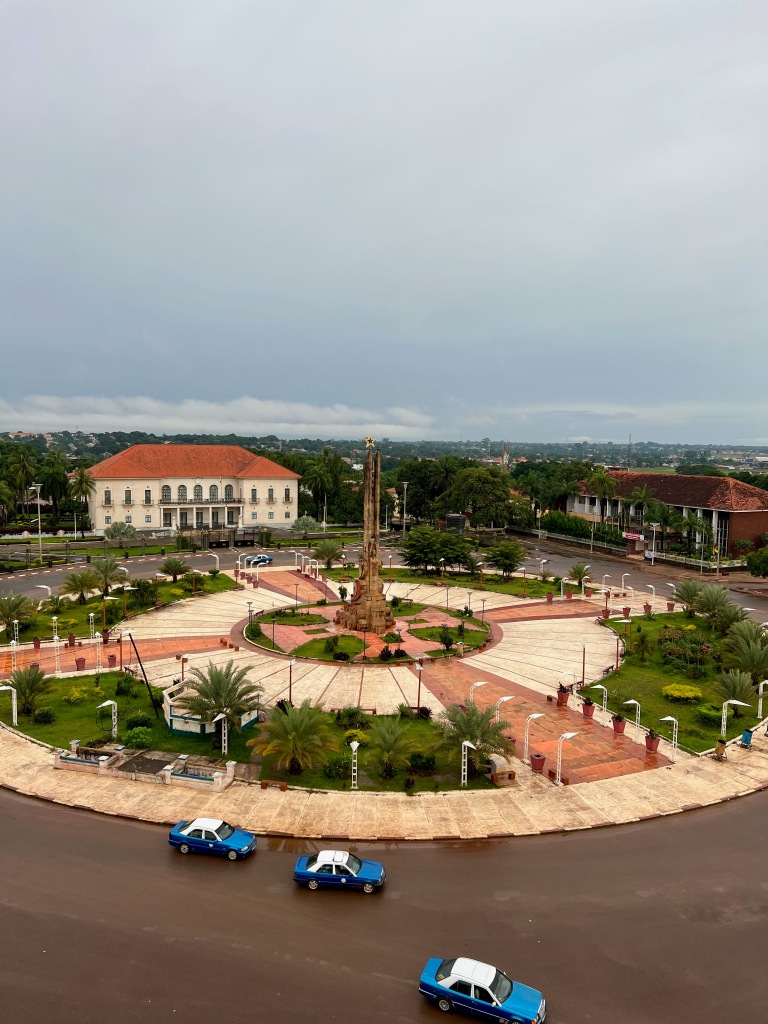
We passed by the local market area right next to the street, where vendors, buyers, and passersby were cloaking the sideway and half of the road, buzzing around to buy some last items and then go home before it got dark. Everything was laid on wooden tables with parasols, from food to clothing and household essentials.
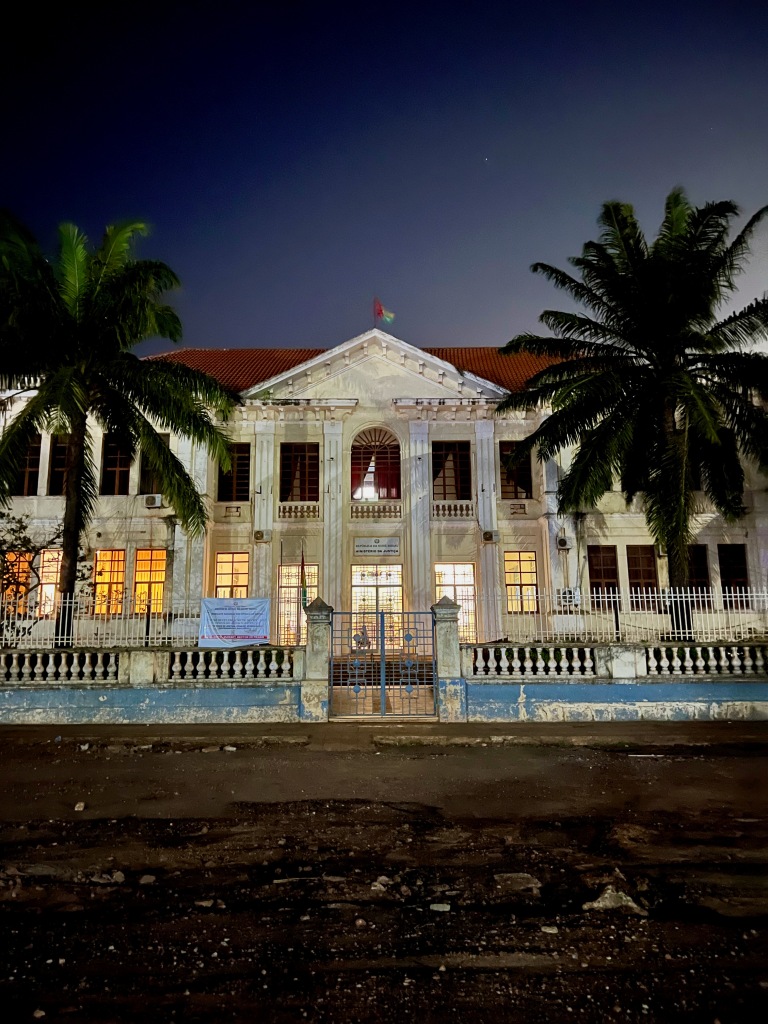
As the sun went under and turned the surroundings into a reddish light, we arrived in the central district with its colonial-style buildings – many run-down or half-ruined during the Guinea-Bissau Civil War from 1998-1999. On the main square surrounded by a roundabout, the monument built for Guinea-Bissau’s independence from Portugal in 1975 had an almost socialist flair.
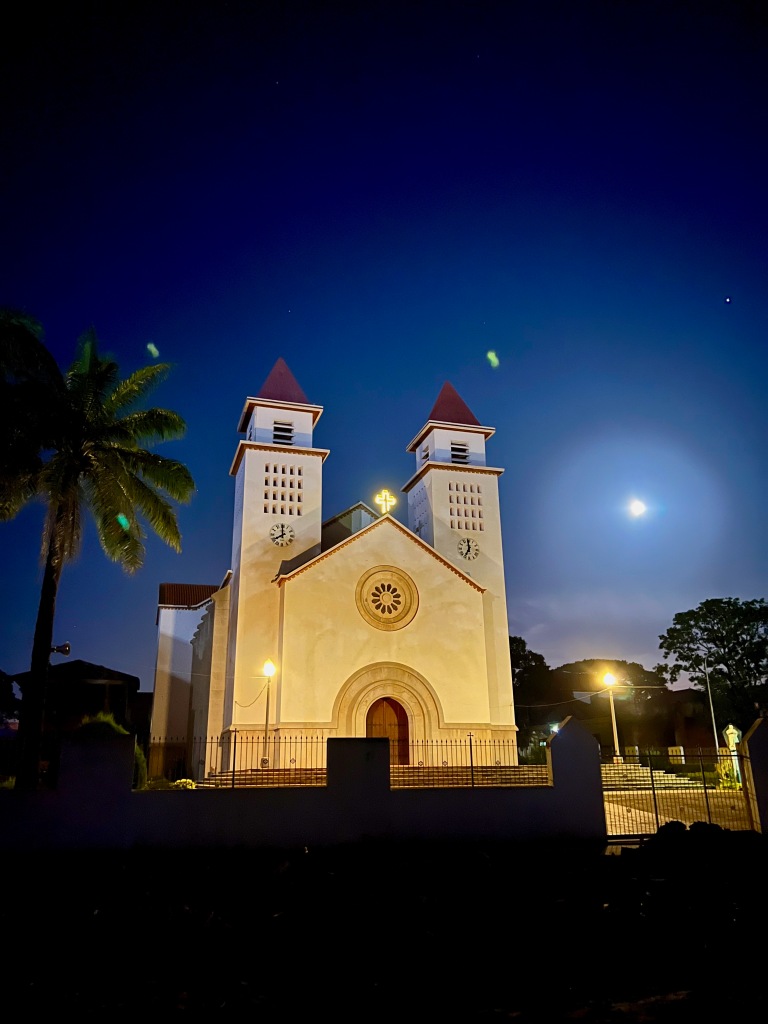
Bissau, the capital, is a sleepy town of just under 500,000 inhabitants. The streets were dark and empty in the evening, and some restaurants were closed – maybe because it was a Sunday. But later, a Spanish couple working in the country for years told us that not much was happening, no matter which day of the week. No art exhibitions, no cinema, and not many restaurants or bars to choose from.

But we were not in Guinea Bissau for that. Instead, our journey took us to the harbor. A tiny motorboat waited for us between a couple of larger container ships and the ruins of a sunk ship. After a two-hour ride over the ocean, we finally arrived. Several islands stretched to our right and left and more to our front. Almost no signs of humans – instead, empty beaches with a few rocks here and there and forests as far as the eye could see. Then we saw a small boat and a few fishermen. Soon, our first destination came into sight – Ponta Anchaca hotel on the Rubane Island.

The ecolodge is situated along the white sandy beach, each of the modern rooms a separate hut on stilts between the palm trees with a view of the ocean. Dinners are taken on wooden planks over the water, the perfect setting to watch the sunset behind the nearby Bubaque Island. With a pool, a conference room, and a fitness studio, it leaves nothing to be desired. Excursions for fishing or to other islands to see turtles, hippos, and traditional villages are being offered.

But those who want to have some nightlife need to take the five minutes crossing to Bubaque, the main town of the island with the same name. With a population of six thousand, it is not quite buzzing, but enough to join the locals for some dancing.
On our first evening there, we followed the sound of drums and singing and soon were in the midst of women wearing colorful T-shirts and bast or linen skirts. They danced in honor of an animistic female spirit, which stood as a dressed-up statue on the side of the open space. The sweet palm vine soon made us shake our hips as fervently as the local women.
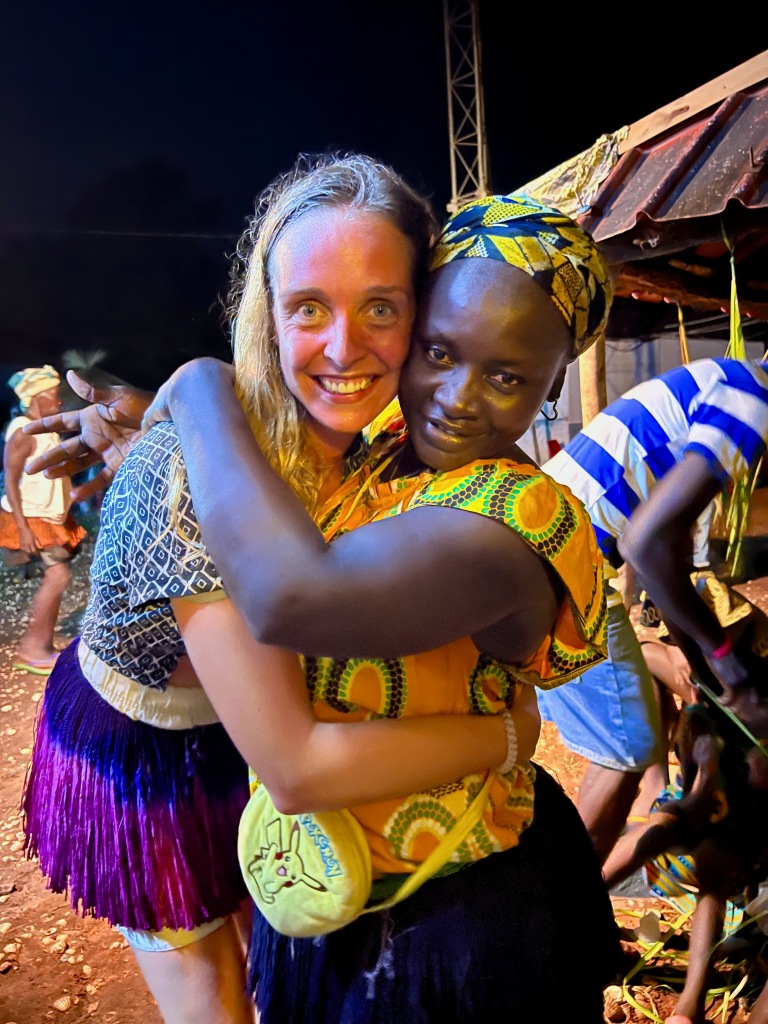
Sweaty, we later fell into our beds at the Mango Lodge, one of the few hotels in town. Its owner, a Belgian, who has been living here for years, just opened a second lodge, the Cajou Lodge, a more high-end version, in town. From here, we took the boat the next day to explore one of the other islands nearby.
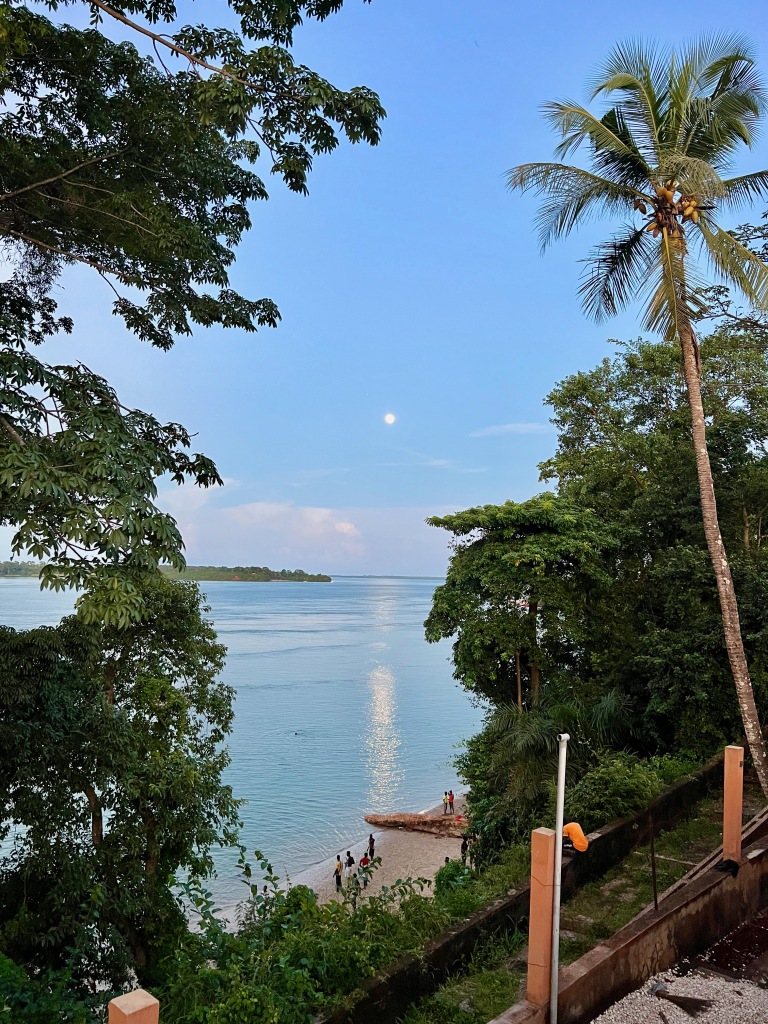
To reach the island, we had to take a small motorboat from the neighboring Bubaque Island, where we were staying. We cruised up and down for 30 minutes along the vast empty beach of Canhabaque Island, trying to find a place to land. Our guide Iaia and his friend Mario, who was steering our small motorboat, talked in Portuguese. Unfortunately, we had left too late; the tide was low, and the water too shallow for the boat to come close. When Mario finally let us leave the boat, we had to wade another 20 meters through the water and mudflat before we reached the sand.

I paused for a moment to look around me. It felt like we discovered a lonely island – not a soul to be seen. Behind the narrow beach, an impermeable forest started. It felt like, at any moment, a wild animal could emerge from it. But Iaia knows this island; it’s his home. While it seems uninhabited, twenty small villages exist on 111 square kilometers.
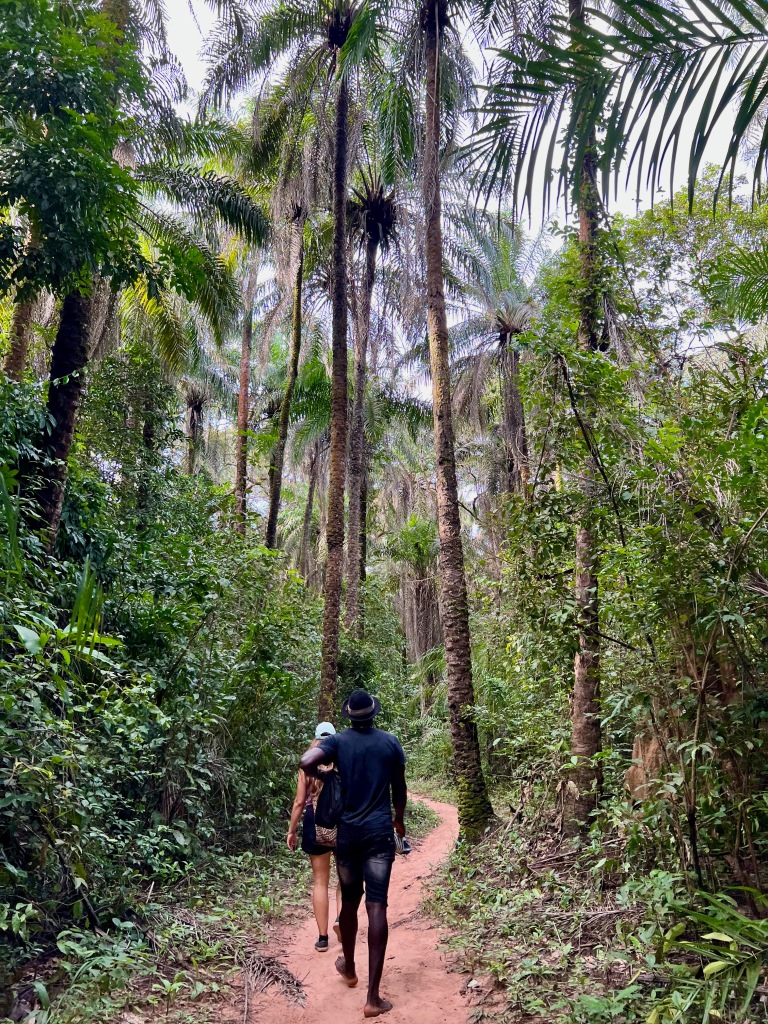
To reach them, we had to walk through the mangroves, the flatlands, and the forest. Diligently, we marched behind Iaia along small paths through the jungle. When it finally opened, we stepped onto a clearing with large grasses and palm trees.
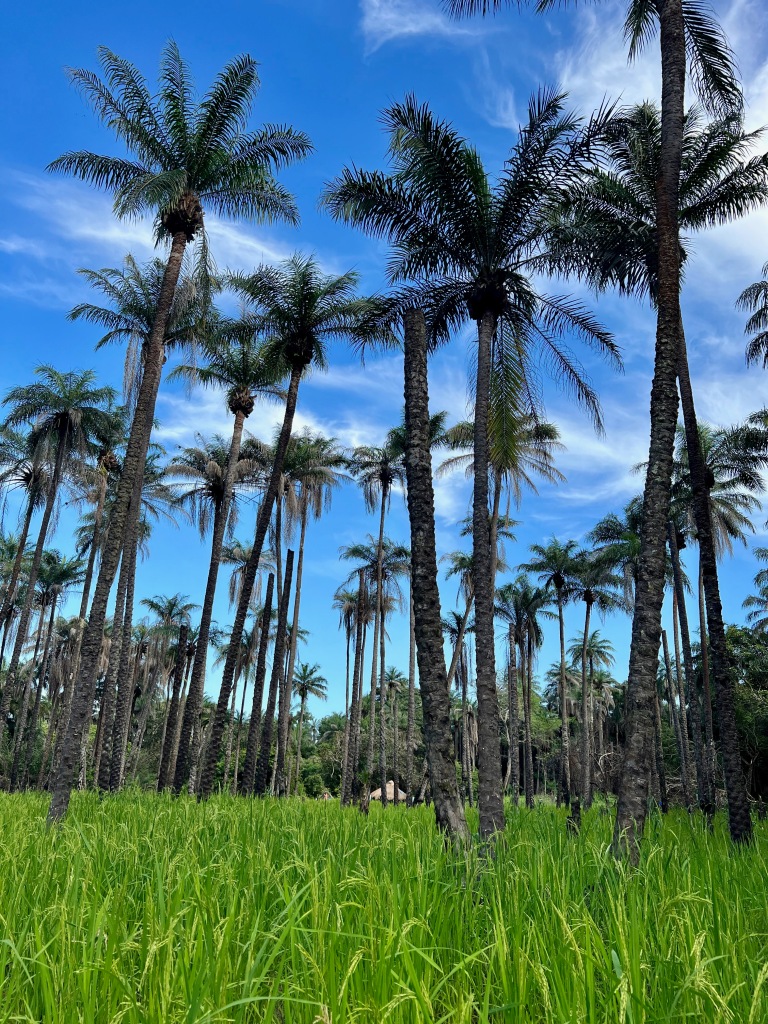
As we came close to the village, we had to pass under an archway made from tree branches and palm leaves. “By walking through this, you leave all sicknesses and other evil behind and don’t bring it to the village,” Iaia explained.
As expected, the children of the village saw us approaching first and ran to us excitedly. We were here to meet the village elder and the king, bringing soap and other essentials – and candy for the children.

Every village on the Canhabaque Island, one of the islands of the Bissagos archipelago in Guinea Bissau, has a king who lives in the Sacred Forest. Outsiders are not allowed to enter. When we visited, all the young women were in the forest for their initiation ceremony to enter adulthood.
But we were lucky – one of the kings of a neighboring village was passing by with his wife. Of small stature, he did not look regal at first sight, but it was clear that he was a man of importance. His large hat, with a feather and emblems attached, resembled a traditional Swiss hat. Over a t-shirt, he had a white throw with blue stripes, and in his hand, a scepter made from the horns of an animal and a bag woven from raffia – one of his sacred insignia that no one is allowed to open. His wife wore a beautiful red dress with embroidery and a pink headdress.

The tradition is deeply rooted in the culture of the ethnic groups of Guinea Bissau and the Casamance region in Southern Senegal, where almost half of the people still follow animistic beliefs besides Islam and Christianity. The kings, and on Orango Island, also queens, reign over one or several villages and are responsible for mediating conflicts, guiding the village through difficult times, and distributing food fairly. They also oversee all spiritual ceremonies and rites and are the primary guardian of fetishes, spirits living in natural objects such as stones or trees. During initiation ceremonies, they play a crucial role in educating young men and women about their societal duties.
Some are trying to challenge traditions. “I had to leave my family, live alone for 7 years, and then remarry a chosen queen when I became king,” another king we met on the island recounts. “It made me sad to not be able to be with my first wife and children anymore, and I am trying to change this rule.” But most traditions have been unchanged for hundreds of years on this secluded island without motor vehicles or roads.
After the short encounter, the family of Iaia invited us for lunch. We got served rice with meat and an orange-colored sauce made from squash and palm oil. The sauce was tangy and thick, the meat juicy and so soft that it fell off the bones. In minutes, we finished the bowl that we all shared.

When we asked Iaia what meat it was, he struggled to find the French word. “It’s a forest animal,” he explained. After lunch, we walked around the house to say goodbye to his family. A child held a large dead rat to my face, making me jump and step back. Then, proudly, Iaia picked it up and clarified: “This is what we ate! It’s a delicacy here.” Dumbfounded, I stared at him. We just ate rat – and it was delicious.

Leave a comment